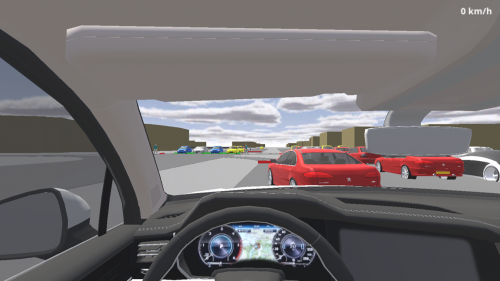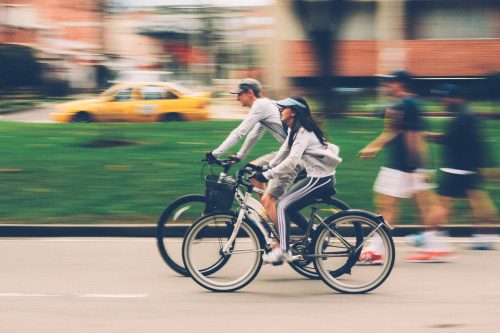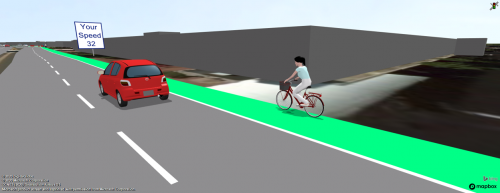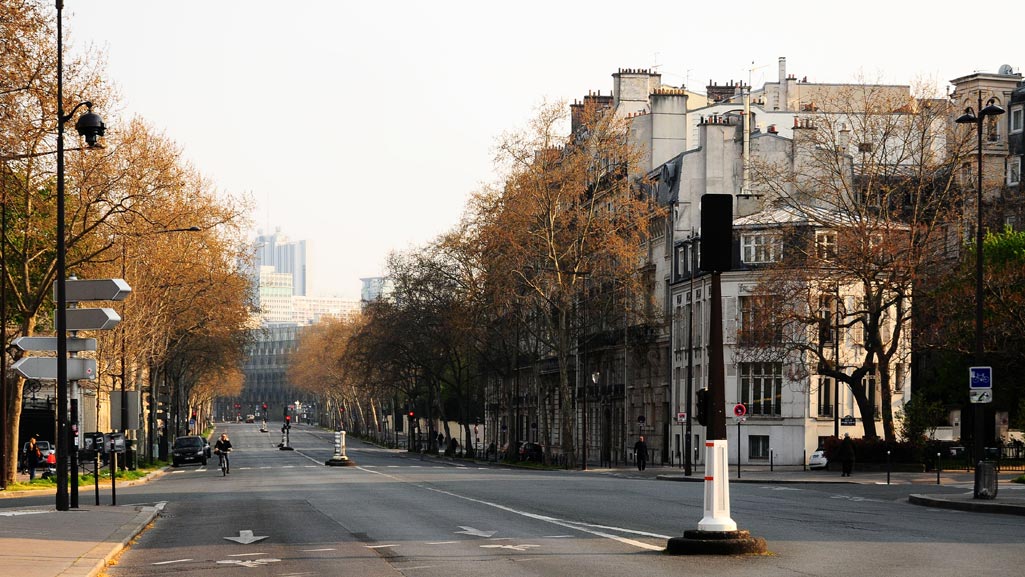Traffic volumes and delays are decreasing during the Coronavirus (COVID-19) pandemic in many cities around the world. Daily commuters are working from home, while others have jobs put on hold. Those still commuting are likely to experience an increase in travel reliability and better travel times. Why?
Streets with traffic lights, or signalized urban corridors, often have large “green waves” during peak times, meant to serve congested conditions. But during COVID-19, when most commuters stay at home, there is little congestion. These corridors are reported to be wide open.
But those empty streets are also causing cars to speed up, even in cities like New York City and Seattle. This is similar to what we experience during the holiday commuting when the lucky ones can take time off. Except, these trends may last for a few months until we are back to normal, increasing safety risks for motorists, pedestrians, and bicycle users.
Speed limits – key to safety

Speed increases have been linked to a greater likelihood of crashes, according to the European Union and the World Health Organization. To illustrate this, PTV Group conducted a study in the Bolivian city of Santa Cruz de la Sierra, using PTV Vissim software.
In the study, we modeled how various speed limits and their enforcement by authorities affect safety. This study correlated near misses and crashes on an array of mitigation configurations. Furthermore, the PTV Driving simulator allowed an at-the-wheel examination of dangerous intersections. These locations had different speeds with a mix of pedestrian influences.
The study’s results showed that reducing speed limits are more effective at decreasing the number of incidents for rear-end and lane-change crash types. Enforcement of the speed limit proved to be the more effective crash mitigation for vehicles crossing the main roadway at intersections. Combining both measures provides a general decrease in crashes for this study area.
Slowing down
Next, we know that pedestrians and bicyclists often depend on slow traffic conditions to survive, literally. Crashes that involve vulnerable road users and vehicles traveling at higher speeds, can lead to devastating consequences. Many safety studies show that vulnerable-user fatalities dramatically increase with only small increases in speed: At 20 miles-per-hour, 9 out of 10 pedestrians involved in a crash are expected to survive. There’s a reason why school zone speeds are the way they are. At a speed limit of 25 mph, exceeding the limit by 5 mph decreases survival to 5 out of 10.
Another issue is that many areas impacted by coronavirus / COVID-19 are experiencing an overall reduction in pedestrian and bicycle volumes. You might first think, “how is this a problem? Fewer users could get hit”. But, remember the goal of Vision Zero is to eliminate all road-crash deaths, not only reduce them.
Studies link reductions in vulnerable-user volumes with the safety-in-numbers concept. This concept simply states that the more pedestrians and cyclists that are visible, the more motorists are aware of their presence. For example, remember that time when turning a corner, you didn’t see that one pedestrian or cyclist crossing the street until the very last second. But imagine that it was a group of 10 vulnerable users crossing – you would have obviously noticed them earlier.

Reducing accidents during COVID-19

So, what can we do to reduce the risk of road crashes during the COVID-19 crisis? The combination of increased vehicle speed and a decrease in vulnerable-user volume is an immediate problem that requires prompt investigation and mitigation.
Taking lessons from PTV’s Bolivia Study, decreasing vehicle speed and enforcement would have benefits for motorists, pedestrians, and cyclists. Utilizing the PTV Vistro software, traffic operations engineers and planners can quickly develop mitigation strategies like traffic signal re-timings and coordination to reduce speeding potential. PTV Vissim can be used to simulate and visualize the impacts of these mitigations before deployment.
The placement of temporary speed trailers can also contribute to reducing the risks. In this case, PTV Vissim can simulate enforcement tactics for motorist reactions to speed trailers.
For unpredictable circumstances like COVID-19, having an up-to-date Urban Mobility System becomes more important than ever. With an Urban Mobility System, agencies can quickly test solutions in PTV Vistro and then seamlessly simulate in advanced microsimulation with PTV Vissim. Through colorful maps and 3D animations, engineers can share with the public and with elected officials how new traffic measures work and their anticipated outcomes.
Read more about how practitioners can use PTV’s Urban Mobility System to address changes in traffic patterns due to COVID-19 in this detailed article.
